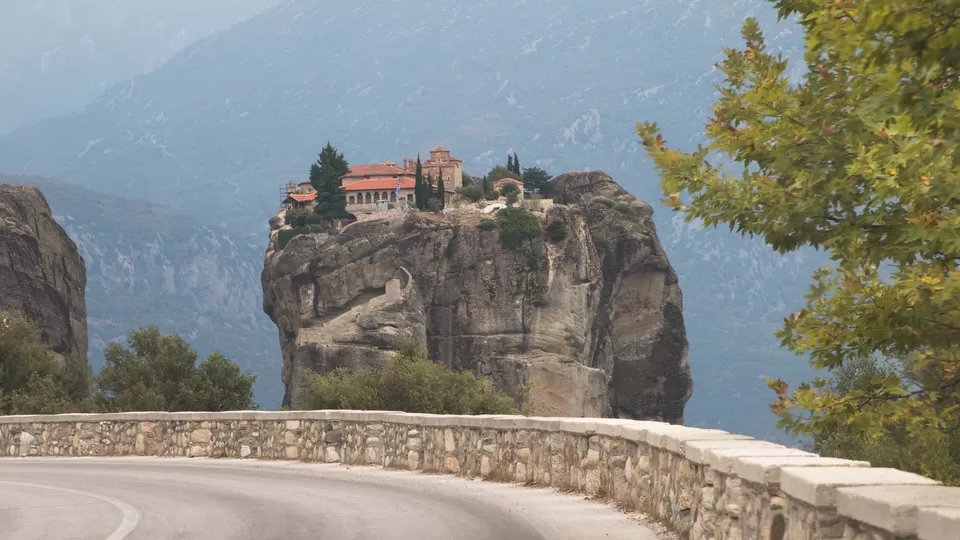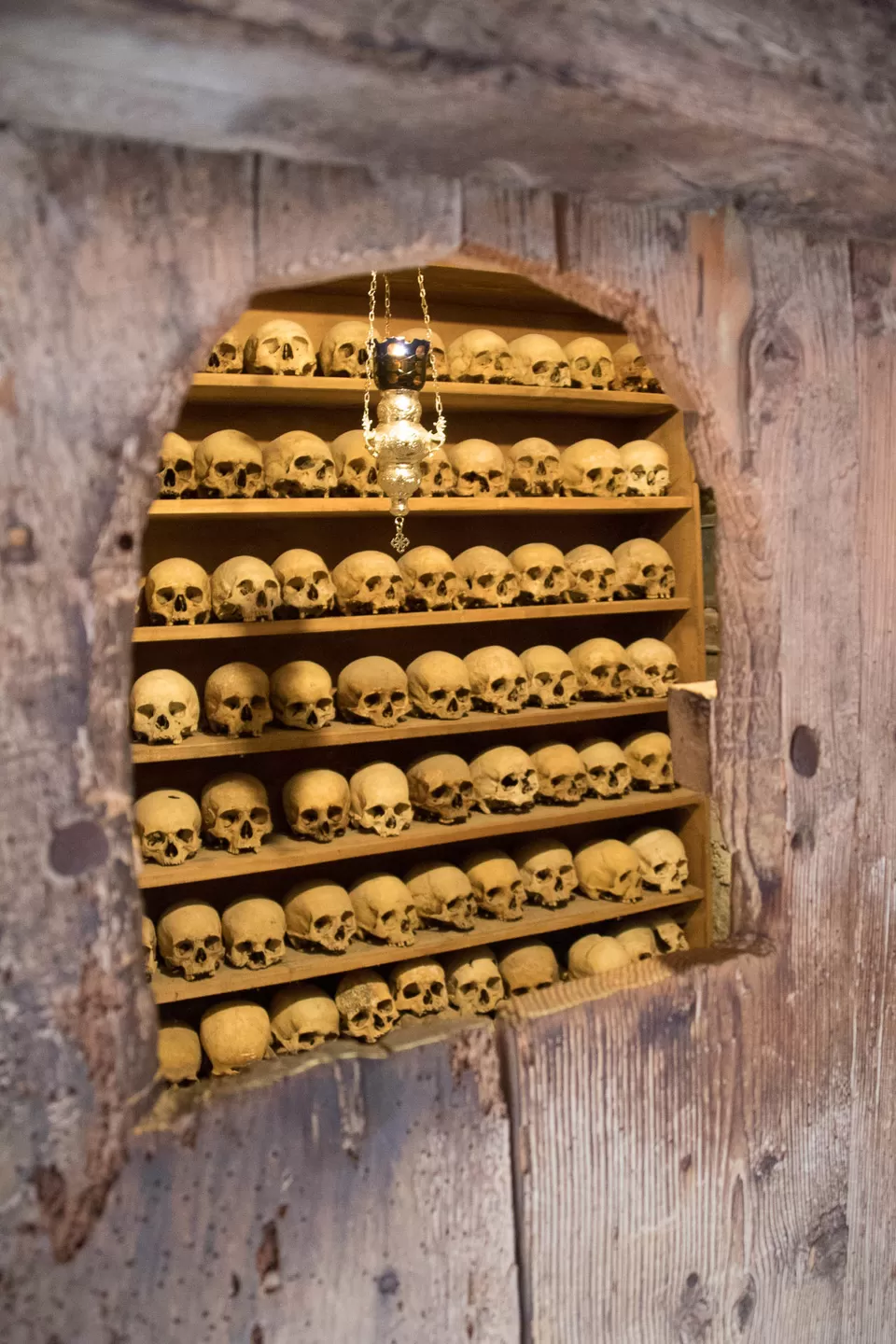The vast surface of Earth is filled with tons of wondrous places which makes us wonder if they are even real. Only by seeing it ourselves do we actually come to terms with it. This isn’t the case with a few other mystic places. Even after viewing them with our own eyes and coming back home, we still won’t be able to digest that the place really exists. This is the case with the Meteora Hills in Greece.

Greece comes under the European Union. Euro is their currency. Greece could be entered using the Schengen Visa used for entering many other European countries. Yet, the reality is that Greece is excluded out of all popular European tour packages. Probably due to its financial crisis as well as route difficulties. But Greece, in fact, powerfully dominates over every other country literally in Europe in terms of its diversity in the beauty that it holds. Travelers passing through here usually fall in love with the breathtaking islands, with Mykonos, Creta, Corfu, Santorini being some among them to choose from. But what astonished us were the isolated Meteora hills at the heart of mainland Greece.

In Greek, Meteora stands for “hanging from the sky”. Situated at the top of the hills, six Christian monasteries stand accounted for this name. These monasteries stand at the edge of steep rocks. Meteora is 350 km away from the capital city of Athens. As far as transportation is concerned, there’s a train running from Athens to Kalambaka, a town at the bottom of the hills. Departing at 8:30am it reaches by 1:30pm at Kalambaka, while the train back departs at 5:30pm and reaches by 10:30pm. Usually travelers would stay a night at Kalambaka and after a day of adventurous sightseeing, return back.

Kalambaka is a town with sufficient hotels as well as hostel dormitories. We were taken in by Mama Dora’s Greco hostel. As the name suggests, she was a kind soul treating all her guests as her very own children. Conversing with her whilst having delicious pizza and coffee made by her, we were informed that she had received a doctorate from Cambridge University on English Literature. She was also the Principal of her very own school. She was forced to shut down the school due to the recent financial crisis that struck Greece. She was cultivating her own food supplies rather than simply buying them from outside. In fact, the bell peppers, tomatoes and onions in the pizza itself were from her own backyard.
After a wonderful breakfast, we got dressed up and headed over to the top of the mountains. Starting at 9am, there is a bus heading back and forth in every two hours, till 3pm to go to the monasteries from Kalambaka. But we chose to go in a car arranged by Dora so we could stop and see the perfect viewpoints on the road. Dimitri, who assisted Mama Dora was our driver for the day. Dimitri was a postgraduate who after facing unemployment in Greece joined along with Mama Dora in hopes of a livelihood. Back to the journey, we’d been peaking up the mountains. Meteora is filled with round-shaped, glistening rocks.

Over thousands of years ago, this place was believed to have been submerged underwater. The flows of tides have caused the glistening smooth texture on the rocks. It is also said that, a bunch of earthquakes which happened a very long time ago, have formed huge cracks on the ground which drained the water, thus making these hills protrude out. Since the 11th century, Christian monasteries have started to appear on top of the hills. It is believed that this was done so that the recluse monks could live closer to God and heaven. There were about 24 monasteries initially built, out of which only six remain – Anapausas, Rousanou, Megalometeoron, Varlam, Holy Trinity and Stephanos, each of which requires over a hundred steps to be climbed upon.

These monasteries shot to fame because of the James Bond film, “For your eyes only”, in which Roger moore portrayed the iconic character. The Meteora Hills was the prime location in that movie. The most beautiful and the biggest of all six monasteries is the Megalometeoron monastery which was founded by St Athanasious Meteoritus.The monastery is named after him. In passage of time, the whole of these hills inhabited by the monks gradually came to be called as Meteora. We could reach the entrance of megalometeoron after climbing over 150 steps and having paid three Euros per visitor. On our way to getting the entrance pass, we came across a room that held various belongings including utensils, wine barriers, ropes, ornaments of Bishops, etc.

Through a small window, we could also see hundreds of skulls stacked upon logs packed close to each other. These skulls are believed to be those of the Greek prisoners who were incarcerated here by the Turkish army during their invasion of Greece. Climbing up a ladder from there, we reach a balcony from where the Varlaam monastery as well as the rock it stays on, can be viewed ahead. The sight of Varlaam monastery clinging onto the steep rock is simultaneously amazing as well as terrifying.

Next, we moved onto visit the prayer area in Megalometeoron, which was a small chapel consisting of two rooms. Since photography is prohibited in this particular room, we had to go in with closed cameras. Taking three steps in, we almost froze seeing that the room was filled with spectacularly painted wall murals. Pictures depicted the life, death and resurrection of Lord Jesus. The room was beautifully lit from above, displaying how amazing the murals looked. The whole room was extremely calm reminding me of the Sistine chapel of vatican.

Exiting this monastery, we moved onto the beautiful and breathtaking sunset rock of Meteora. This place was famous for providing a panoramic view of four out of six monasteries packed elegantly in a single frame. Anapausas, Rousanou, Megalometeoron and Varlaam are those which could be viewed from here, out of which Anapausas was the smallest. The sunset rock’s bottom held Rousanou, while either sides at a distance apart were the Megalomiotron and Varlaam monasteries. As the end of September neared, the surrounding trees changing their colour into red and yellow could very well be observed, marking the dawn of Autumn. After having spent some time there, we then moved onto the other side of Meteora to visit the two remaining monasteries.

On arriving at Holy Trinity, we realized it was situated on top of a huge rock that gave an image of an enormous pillar sticking out from the surface. This was the most intriguing of the six monasteries in terms of external appearance. After having to go all the way down the hill, steps spiraling upwards had to be conquered before actually reaching the monastery gates. The insides of Holy Trinity lacked the grandeur of Megalometeoron monastery, being rather a small one but also giving us almost the whole view of the town of Kalambaka from above. Since it was getting late already, we took our exit.

By the time we got to the entrance of Stephanos, it was almost dusk. This one was the only nun monastery in Meteora, run solely by women. This is also the easiest one to get to. There was a bridge built right from the roadside leading our way straight to the rock, thus making it the easiest route. We decided to spend our time outside, watching the sunet. At times the clouds would give way to the sun which shone with all its raw glory, at that point which the whole place would be glowing golden. While taking in all its natural beauty, the clouds will cover up and the place would get dark again and so on. We loved these amazing moments at Meteora before darkness swallowed the hills completely.

This blog was originally posted on Clueless Compass.

























